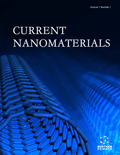Abstract
Silicon-based semiconductor devices have sustained Moore’s Law for a long
time. However, with the downscaling of devices, the focus of the industry has shifted
toward alternative materials having application-specific properties. Memristors have
emerged as one of the prospective semiconductor devices for multi-faceted applications
due to their data retention properties, convenient fabrication, and less complex circuit
architectures. The dual resistance states of memristors have been employed in multiple
intelligent applications, including brain-inspired computing architectures, methods,
cryptography frameworks, and biological sensing. The non-volatility of memory and
compatibility with CMOS-style architecture have led to a wide range of domains that
are capable of exploiting the properties of memristors. A number of mathematical
models have also been developed to explain the working principle of memristors. This
chapter reviews the theory and applications of memristors for the silicon era and
presents the future perspectives of these devices for the post-silicon era.
Keywords: CMOS-compatible memristors, Memristor neural networks, Memristive logic, Memristive sensors, Memristive machine learning, Neural intelligence, Silicon memristors.






















